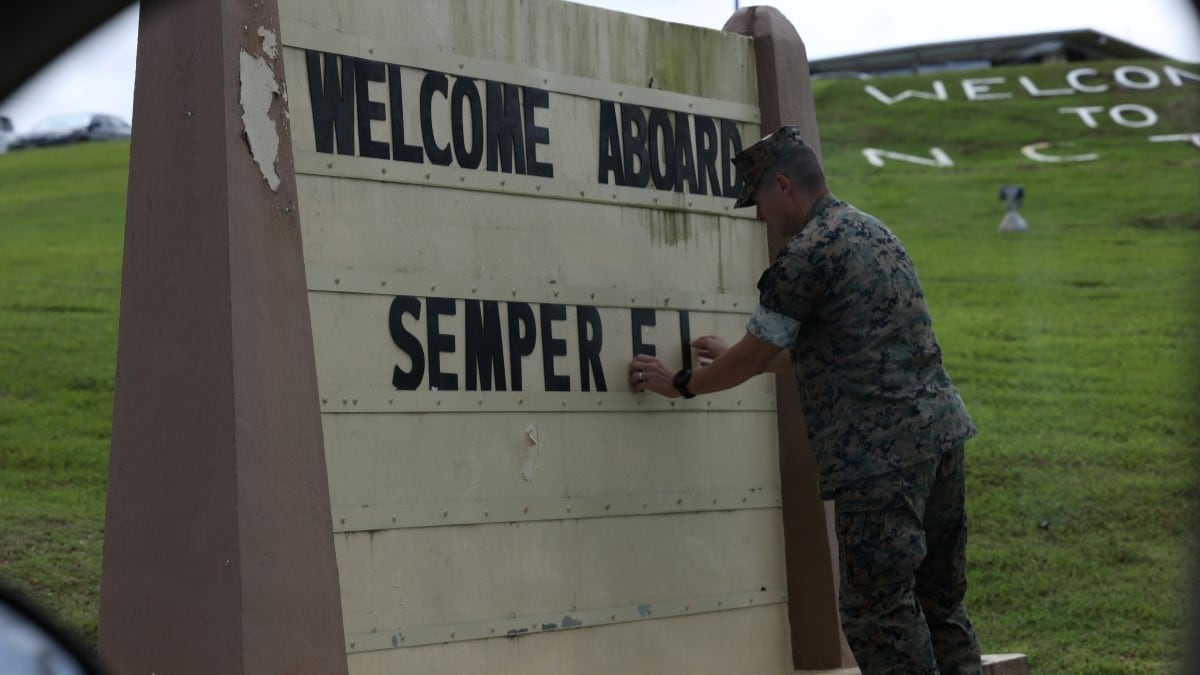The long-awaited relocation of US Marines from Okinawa, Japan, to Guam finally commenced on December 14, marking an important step in a bilateral effort to reduce the concentration of American troops on the southern Japanese island, officials announced.
The transfer began with the deployment of 100 members of the III Marine Expeditionary Force from Okinawa to Guam. These personnel will spearhead logistical preparations for subsequent phases, according to a joint statement from the US Marine Corps and Japan’s Defense Ministry.
This milestone comes nearly 19 years after the initial agreement was reached in October 2005 during a meeting of the two nations’ foreign and defense ministers.
Under a revised 2012 plan, approximately 9,000 of the 19,000 US Marines stationed on Okinawa will be relocated in stages, with around 4,000 headed to Guam. Once the relocation is complete, the number of US Marines in Okinawa is expected to drop to about 10,000.
Defense Minister Gen Nakatani said, “This is a very important initiative. We will continue working with the US side to promote the relocation,” he stated.

The transfer is designed to ease the burden on Okinawa, where US troop presence has been a source of tension and concern among local residents.
However, details regarding the size and timing of subsequent transfers remain unclear, with Japan’s Defense Ministry noting that a schedule for the next phase has not yet been finalized.
US officials have previously indicated that the relocation to Guam will proceed incrementally, with arrivals expected to continue into the late 2020s.
According to Joint Region Marianas (JRM), Guam’s military population is projected to grow by 2,500 people within the next two years, with an additional increase of 15,500 people by 2037.
The move is part of broader efforts to reshape the US military presence in the Indo-Pacific region while balancing strategic interests with regional sensitivities.
For Okinawa, which has long hosted the bulk of US forces in Japan, the relocation represents a potential easing of the decades-old strain tied to the island’s role in the US-Japan security alliance.
The Marine Corps reaffirmed its dedication to Japan’s defense and its broader goal of maintaining “a free and open Indo-Pacific.” According to a joint statement, this will be achieved through a combination of stationing and rotating Marines in Japan, Guam, and Hawaii.
Additionally, the Marines plan to conduct joint training exercises with Japan’s Self-Defense Forces in Guam.
Longstanding Grievances Over US Military Presence In Okinawa
Okinawa, which remained under US control until 1972, continues to host the majority of the 50,000 American troops stationed in Japan under a bilateral security agreement. Although the island makes up just 0.6% of Japan’s total land area, it accommodates 70% of the country’s US military facilities.
For decades, many Okinawans have expressed frustration over the heavy US military presence, citing issues such as noise pollution, environmental damage, aircraft accidents, and crimes linked to American personnel.
Public opinion in Okinawa remains divided. Some residents acknowledge the importance of the US-Japan alliance, but concerns persist about the social and environmental impact of hosting foreign troops.
These long-standing grievances were intensified by a 1995 incident in which three US servicemembers were convicted of raping a 12-year-old Okinawan girl. The incident sparked widespread protests and prompted the allies to explore ways to ease the burden on local communities.
The beginning of the Marine relocation coincides with renewed criticism of US military conduct following high-profile cases of sexual violence.
Just days before the transfer, a senior Air Force member stationed at Kadena Air Base was sentenced to five years in prison for the kidnapping and sexual assault of a teenage girl in 2022. The case, which was handled by the Naha District Court, has fueled further resentment toward the American military presence on the island.
While the relocation of Marines to Guam may be seen as a step toward alleviating some of these challenges, it is unclear how much relief it will provide, especially as Japan’s military continues to build up its presence on Okinawan islands to counter regional threats, including those from China.
On the other hand, Camp Blaz in Guam is the first new Marine base established since 1952 and is set to function as a “strategic hub” in the Indo-Pacific, a region prioritized by the Defense Department due to rising tensions between the United States and China.
Located in the Mariana Islands, Guam came under US control in 1898 following the Spanish-American War and was designated an unincorporated territory in 1950. The island already hosts substantial Air Force and Navy operations.
Japan has contributed up to $2.8 billion toward building infrastructure at US bases on Guam, with the US covering the remaining costs. Both governments will continue to collaborate on the development of Camp Blaz, which will serve as the central hub for Marines stationed on the island.
- Contact the author at ashishmichel(at)gmail.com
- Follow EurAsian Times on Google News